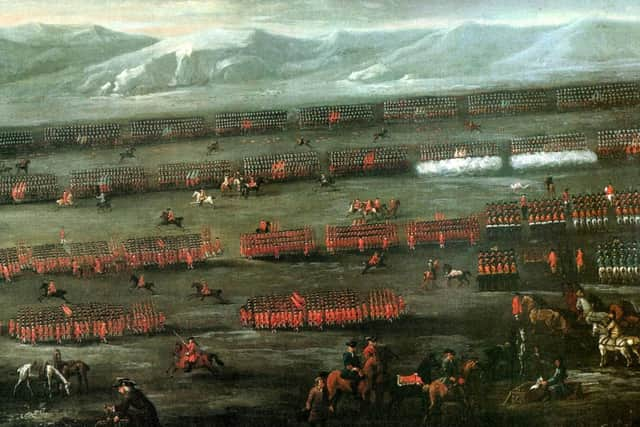Jacobite sympathies led to downfall of Livingstons


In the end it came crashing down when James, the fourth and the last Earl of Callendar, marched to Sheriffmuir in support of James Stewart the ‘‘Old Pretender’’ in 1715.
James Livingston was only four years of age when he inherited the earldom in 1692 and five years later it was his name that was cast on the original town bell which is now on display in the steeple.
Advertisement
Hide AdAdvertisement
Hide AdDuring his childhood Scotland suffered several severe famines which helped encourage support for the deposed Stewarts and this was further increased by the union with England in 1707.


A few years later he was elected as one of the 16 ‘‘representative peers’’ chosen to speak for Scotland in the House of Lords but events were soon to change his life forever.
He was an early supporter of the Jacobites and, when the Earl of Mar raised the Stewart standard in August 1715, James pledged his life to the cause and was given command of a dragoon regiment which faced Government forces at Sheriffmuir.
On November 13, along with 300 men from Falkirk, called by one observer “the blade and buckler-loving bairns of Falkirk”, the young earl fought the battle which the ballad singers recalled as “Some say that we won and some say that they won and some say that nane won at a’ man”.
Advertisement
Hide AdAdvertisement
Hide AdBut the first law of insurrection states that you must win your first battle well to encourage others to join you and a draw was not good enough!
The Old Pretender fled back to France and James set off for Falkirk chased by Government soldiers.
According to a local legend he was able to reach the safety of Callendar House because the loyal folk of the town blocked their passage and fought a pitched battle to save the young lord.
Not long afterwards he escaped from the district and made his way to the north-west where he met up with several other noblemen also on the run and eventually sailed from the Western Isles to Brittany and on to Paris.
Advertisement
Hide AdAdvertisement
Hide AdFor some years he moved around the continent using the nom-de-plume ‘‘Wilkinson’’ and apparently enjoying the Italian weather and fine wine but he died in Rome in 1723 at the early age of 35.
Back in Falkirk the consequences of his failure were being felt by the population. The estates were seized by the Government and the earldoms of Callendar and Linlithgow, which James also held, were extinguished.
The house and estates of Callendar were sold to the York Buildings Company for £18,000 but it had difficulty getting the locals to accept the new ruler.
The company cut its losses by leasing the land to Alexander Glen of Longcroft who held it in trust for Anne, the young daughter of the exiled James.
Advertisement
Hide AdAdvertisement
Hide AdWhen she reached her majority Lady Anne moved into the house and married William Boyd, Earl of Kilmarnock.
Although the couple were no more than tenants they lived the life of local nobility despite a constant shortage of money.
It was this more than anything that led the earl to repeat his father-in-law’s error by joining Prince Charlie’s rising in 1745.
Lady Anne was reluctant but he was enthusiastic and, as the great ‘‘cause’’ unravelled, his life ended on the Tower Hill scaffold.
His stricken wife “died of a broken heart” and the Livingston dynasty in Falkirk came to an unhappy end.